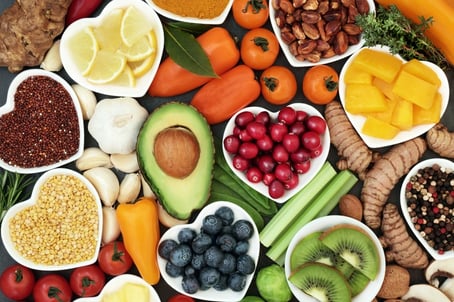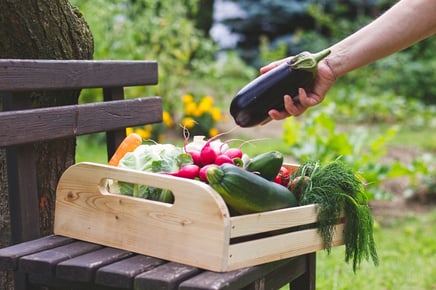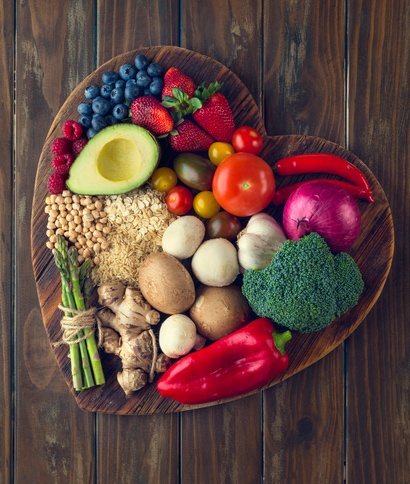 Are you one of those people who are always hungry? Are you constantly thinking about your next meal or snack and what you’re going to eat? The issue could be that you aren’t choosing meals or snacks that fill you up and keep you satisfied. So the alternative is grazing constantly to get that full feeling.
Are you one of those people who are always hungry? Are you constantly thinking about your next meal or snack and what you’re going to eat? The issue could be that you aren’t choosing meals or snacks that fill you up and keep you satisfied. So the alternative is grazing constantly to get that full feeling.
Luckily there are lots of foods out there that are filling and will keep you satisfied longer. These foods are ones that are high in protein, fiber, or good-for-you fat. Here’s a list of 10 foods to choose when you want to stay fuller longer.
- Nuts: Nuts have all three things that help keep you full: healthy fat, protein, and fiber. The key is to stick to a serving size because they are calorie dense. Measure out an ounce and enjoy all types of nuts at snack time or meals to keep you full.
- Avocado: Loaded with good-for-you fat, these tasty treats are a nice addition to a sandwich or salad, or as a dip for veggies. Like nuts, they are very calorie dense, though, so a little goes a long way. Stick to a fourth of an avocado as a serving and enjoy the benefits of staying satisfied.
- Eggs: Studies have found that protein keeps you more full than carbs. When you eat eggs versus a bagel for breakfast, the eggs win every time for post-meal satisfaction. Start your day with this complete protein; grab a hard-boiled egg for a snack or add it to your salad at lunch and enjoy staying fuller longer.
- Popcorn: This tasty snack is high in fiber, which helps with the full factor. It also takes up a lot of volume, which means a serving size is pretty large (3 cups!) for a snack. So, if you like to reach for a larger snack, popcorn could be your new go-to item!
- Berries: Loaded with fiber, these sweet and tasty fruits are an excellent way to increase your fullness factor. They can easily be added to breakfast, lunch, dinner, or snack time. The cancer-fighting antioxidants are just an added bonus.
- Cottage cheese: Dairy foods are high in protein, which is a plus for keeping you full. Cottage cheese is also a great way to vary your snack routine. Toss in some fruit, veggies, or nuts for some crunch, and every day can be a different experience.
- Celery: If you have heard that celery is a negative-calorie food, you know this a great go-to item for filling you up and keeping you full. It’s low in calories and high in water and fiber content, both of which will help keep those hunger pangs away.
- Greek yogurt: Another protein-packed goodie is Greek yogurt. Choose a 2% variety to add some fat to your snack or meal. The portion-controlled cup is also nice to help keep the serving size in check.
- Beans: You get protein and fiber-filled goodness with all of your bean varieties! Toss them into soups, salads, and dips and enjoy the benefits of staying full longer.
- Sugar-snap peas: Another high-fiber veggie that you can add to your routine is sugar-snap peas. They are crunchy and filling and super easy to prepare. Just wash and go!
Add some or all of these 10 foods to your daily routine and enjoy the benefits of keeping that growling stomach at bay!
This blog was written by Angie Mitchell, RD, Wellness Coordinator. To find out more about the NIFS bloggers, click here.


 It is important to get in the nine recommended servings of fruits and veggies each day. This can definitely be challenging. However, in the summertime when produce is readily available all over the country, this is the time to make it a priority to reach that goal! These fruits and veggies are also at their nutrient peak, which is more reason to load up and fill your plate with these colorful items!
It is important to get in the nine recommended servings of fruits and veggies each day. This can definitely be challenging. However, in the summertime when produce is readily available all over the country, this is the time to make it a priority to reach that goal! These fruits and veggies are also at their nutrient peak, which is more reason to load up and fill your plate with these colorful items! One of my favorite things to do once it’s summer in Indiana is visit the various farmers’ markets around town. As a dietitian, I’m a sucker for the fresh
One of my favorite things to do once it’s summer in Indiana is visit the various farmers’ markets around town. As a dietitian, I’m a sucker for the fresh  February is
February is 